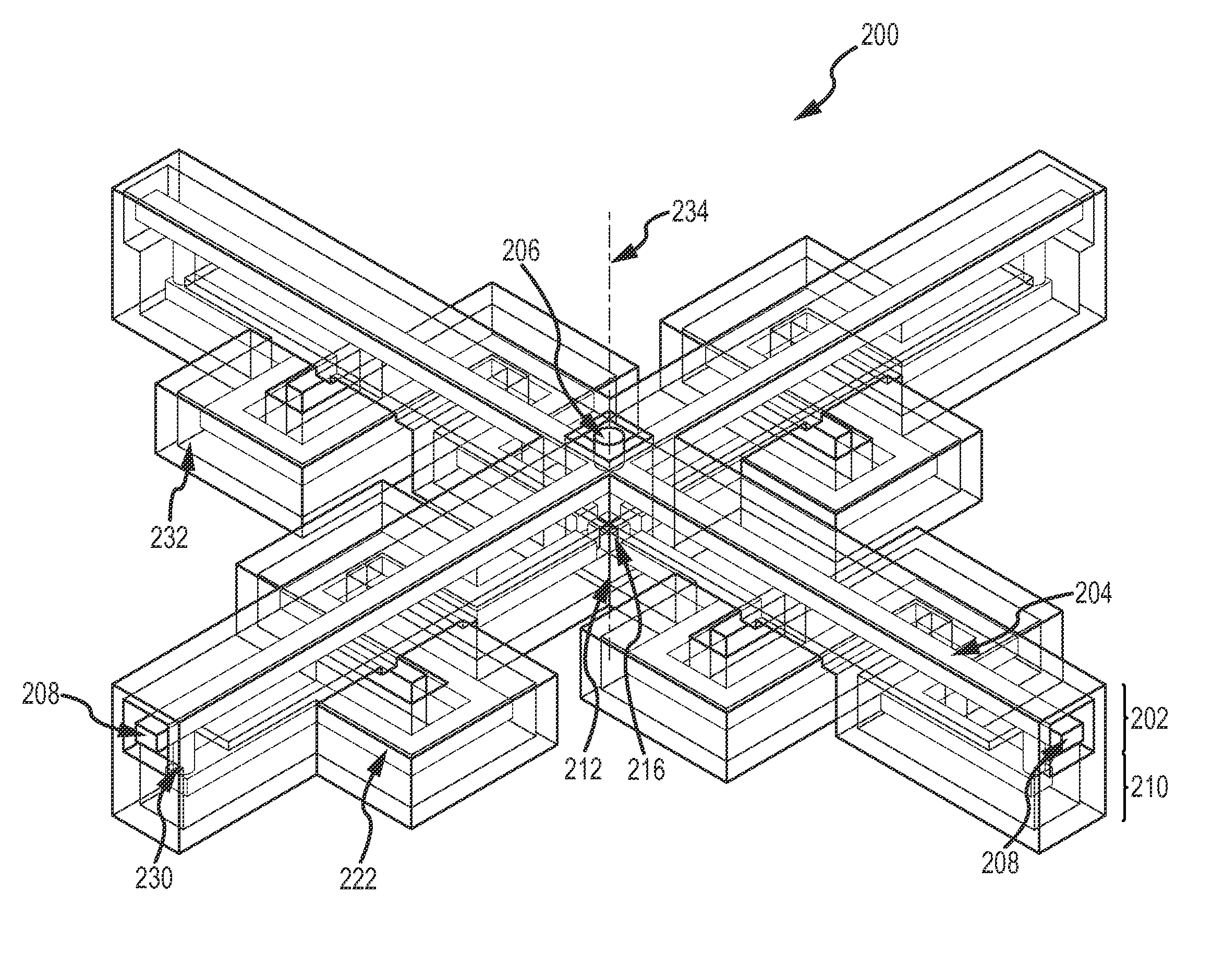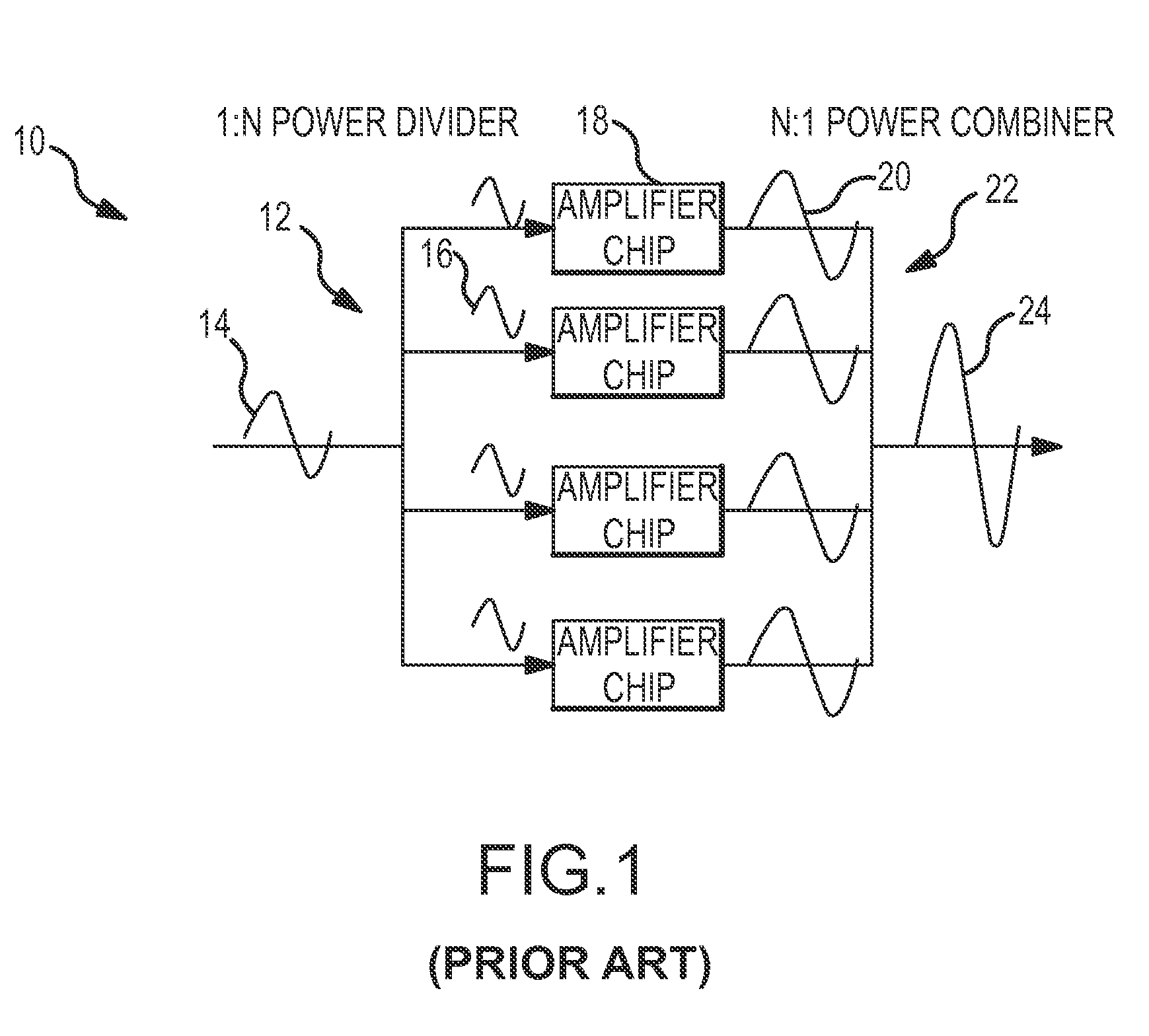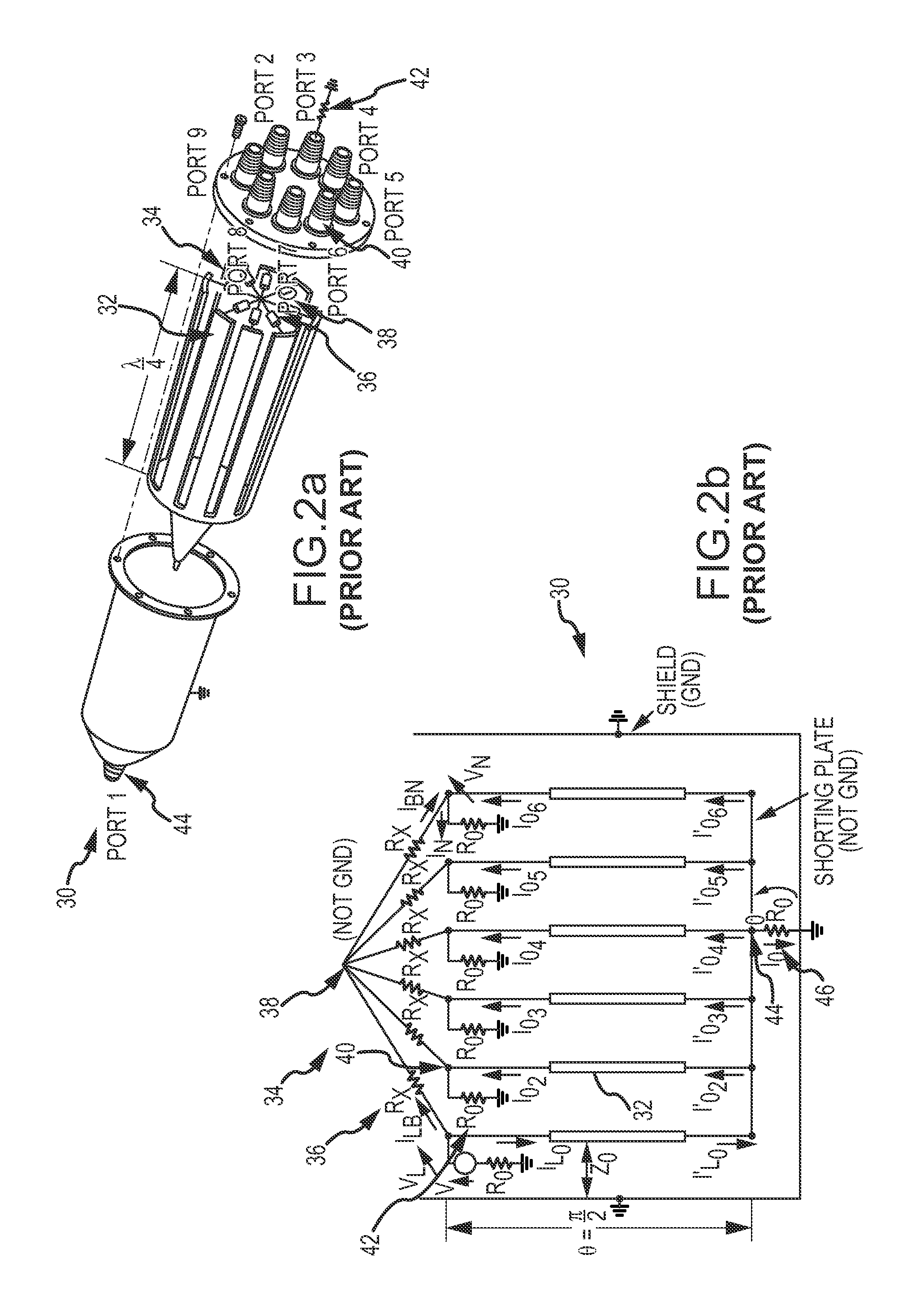Multi-Layer Radial Power Divider/Combiner
- Summary
- Abstract
- Description
- Claims
- Application Information
AI Technical Summary
Benefits of technology
Problems solved by technology
Method used
Image
Examples
Embodiment Construction
[0026]The present invention provides an N-way radial power divider / combiner with a multi-layer topology without sacrificing the symmetry and phase properties of Wilkinson's isolation network. In fact the proposed multi-layer topology can provide better phase properties than Wilkinson's thereby improving the isolation and higher power handling because it can use physically larger resistors. The radial power divider / combiner's isolation network is preferably configured so that separate paths are separated by an approximately zero phase angle at the center frequency to maximize path isolation. The multi-layer structure may be fabricated using low-cost planar metallization technologies. The divider / combiner may be used over a wavelength range of approximately 30 to 0.1 cm (approximately 1 GHz to 300 GHz) and higher frequencies as SSPA technology evolves.
[0027]As shown in a schematic illustration in FIG. 6, a radial power combiner / divider 100 comprises an RF layer 102 including N planar ...
PUM
 Login to View More
Login to View More Abstract
Description
Claims
Application Information
 Login to View More
Login to View More - R&D
- Intellectual Property
- Life Sciences
- Materials
- Tech Scout
- Unparalleled Data Quality
- Higher Quality Content
- 60% Fewer Hallucinations
Browse by: Latest US Patents, China's latest patents, Technical Efficacy Thesaurus, Application Domain, Technology Topic, Popular Technical Reports.
© 2025 PatSnap. All rights reserved.Legal|Privacy policy|Modern Slavery Act Transparency Statement|Sitemap|About US| Contact US: help@patsnap.com



